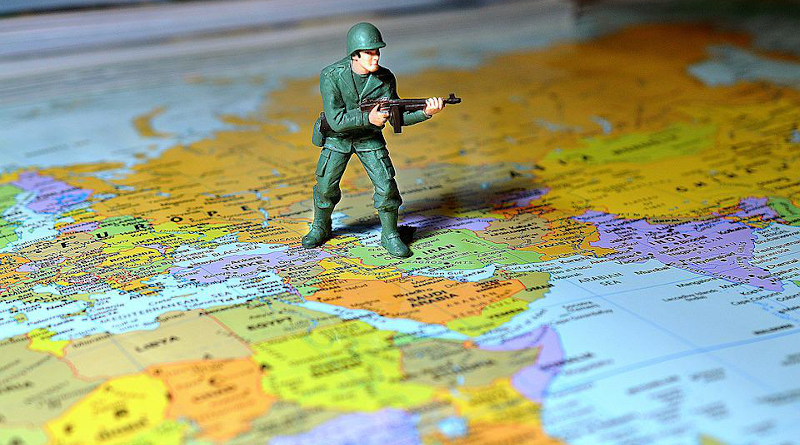In West Asia, Don’t Confuse Tactical De-Escalation With Strategic Alignment – Analysis
By Observer Research Foundation
By Mohammed Soliman*
West Asia (also referred to in this piece as the “Middle East”) went through a decade characterised by intense cycles of proxy conflicts and civil upheavals in Yemen, Iraq, Libya, and Syria and regional competition in the maritime spaces in the East Mediterranean, Red Sea, and Arabian Gulf. Now, regional capitals seem to be on track to pursue de-escalation.
However, some analysts and policymakers have rushed to cast the recent rapprochements between Iran and Saudi Arabia, Türkiye and Egypt, Egypt and Qatar, Türkiye and the United Arab Emirates (UAE), Türkiye and Saudi Arabia, and other regional efforts for de-escalation as strategic alignments that will alter the geopolitical map of the broader region. This characterisation is inaccurate and conflates tactical de-escalation with strategic alignment.
As the Middle East grapples with the increasing global disorder, the Ukraine conflict, growing tensions in Asia, and the United States’ (US) changing level of commitment to the region, the fundamental issues that set the region on a collision course in the first place are still intact and will not break the cycle of competition and proxy conflict that consumed the region in the past.
Global disorder
What is taking place in the broader Middle East is a tactical de-escalation, meaning regional powers aim to recalibrate their positioning in light of not only West Asian political realities but also those of global disorder that has intensified as a result of the COVID-19 pandemic, the Ukraine crisis and its global economic and political fallout, as well as the increasing tensions surrounding Taiwan and the broader Indo-Pacific region.
The pandemic had an enormous impact and slowed down regional economies, disrupted supply chains, and increased debt levels. Despite the scope and magnitude of the disruption caused, it did not break the cycle of intensive proxy conflict and geopolitical posturing. However, it left regional capitals with less of a cushion to handle the subsequent escalation in Ukraine and future major disruptions, such as a potential escalation in the Taiwan Strait.
The view from West Asia
The Ukraine conflict reshuffled the political map of West Asia, as it diverted states’ strategic intentions from focusing on regional competition to dealing with the economic consequences of war—higher energy prices, disruption to food security, and exposure to first and secondary sanctions. The fallout from the invasion could be felt in emerging markets such as Egypt, which faces a challenging food security situation as it is the world’s largest importer of wheat, and Russia and Ukraine are its top two markets. The broader disruption to the global financial system had a particularly acute impact on emerging markets—chief among them Egypt and Türkiye.
Further east, Iran continues to face extensive economic sanctions and a non-stop cycle of demonstrations that hit the heart of the Islamic republic. The Arab Gulf states, while financially secure, are now facing a complex geopolitical map that could pose a threat to their maritime security, energy flows to Asian markets, and, most importantly, their own safety and security as the spillover effect from the conflict in Yemen and Iran’s activities in the Gulf continue to remain a concern.
Where does Washington stand?
Another element in the current tactical de-escalation across the region is the uncertainty surrounding the US’ position in the region considering its de-prioritisation of West Asia in favour of its top priority theatre, the Indo-Pacific. Regarding US foreign policy focus, the Indo-Pacific is followed closely by the European theatre, where Washington continues to support Ukraine inthe conflict.
For regional capitals that are reckoning with Washington’s desire to preserve its political and diplomatic clout in West Asia while reducing its long-term military posture, the fact that Washington maintains an unmatched security and military footprint in the region will continue to heavily influence their strategic calculus.
Will this regional tactical de-escalation last?
The structural pretext that drove the region’s cycle of competition and proxy conflict is still in place without a clear solution in sight. The absence of a balance of power, caused in large part by the US invasion of Iraq and the Syrian civil war, has transformed Türkiye and Iran into transregional powers with the ability to exert influence in Iraq, Syria, Yemen, Lebanon, Libya, and the maritime spaces of the eastern Mediterranean, Red Sea, and the Arabian Sea.
These structural conditions have not changed, and regional tactical de-escalation, no matter its durability and scope, will not be able to pacify the strategic differences between regional capitals. Observers should not be surprised if the region returns to the familiar status of proxy conflict and competition in the time to come.
*About the author: Mohammed Soliman is the director of the Strategic Technologies and Cyber Security Program at the Middle East Institute in Washington.
Source: This article was published by the Observer Research Foundation

